Mission San Juan Capistrano (CA Mission #7)
Introduction
Text-to-speech Audio
Images
Mission San Juan Capistrano. The Mission chapel, though enlarged, is still original--and is the only one surviving in which the original founder of the California missions, Father Junipero Serra, is known to have celebrated Mass.
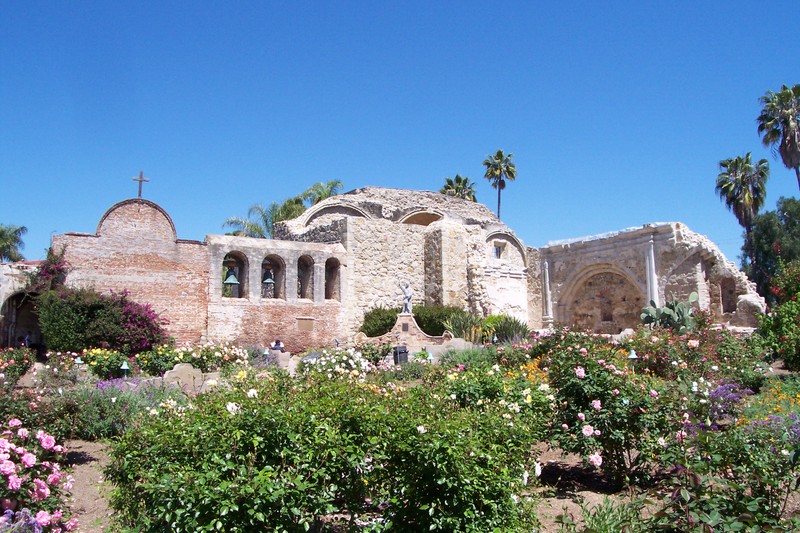
The ruins of the church that was destroyed in the 1812 earthquake. The lives of 40 Indian neophytes were lost in the catastrophic collapse that resulted.
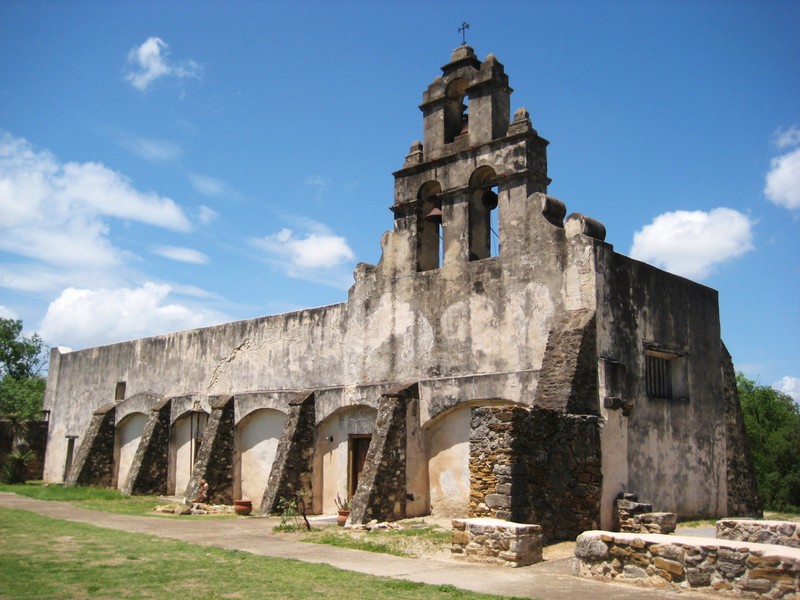
San Juan Capistrano as it appeared in 1850.
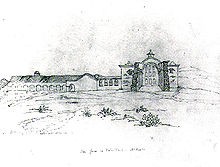
Bells at Mission San Juan Capistrano. Local legend claims that once, upon the death of an Indian woman of the mission, the bells rang of their own accord.
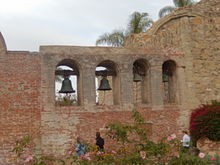
Additional ruins extant from the 1812 earthquake. This massive tremor, which lasted more than 4 minutes, affected many of the missions in Southern California.
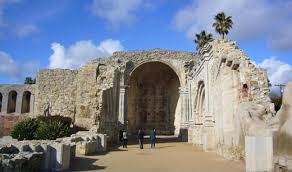
San Juan Capistrano in 1921. Extensive restorations of the church were undertaken after 1860.
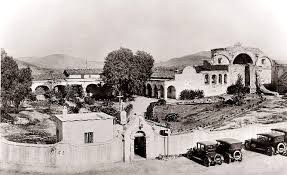
Interior of Serra Chapel in San Juan Capistrano .
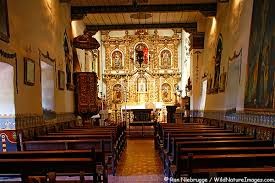
The mission in the 1870s.
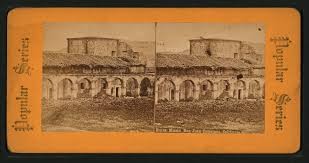
A section of the large and beautiful Mission San Juan Capistrano Garden
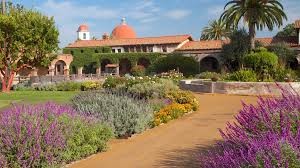
Backstory and Context
Text-to-speech Audio
Mission San Juan Capistrano became the seventh of twenty-one missions to be founded in Alta California. Like the previous six missions, San Juan Capistrano was established to expand the territorial boundaries of Spain, and to spread Christianity to the Native peoples of California. Unlike the British colonies on the East Coast of North America, who brought Europeans from their homeland to form colonies, the Spanish believed they could transform the Natives of California into good Spanish citizens by founding colonial outposts called missions, administered by Franciscan padres and Spanish soldiers. The missions would be a center of learning and training (as defined by the European standards of the day) of Native peoples. The Spanish government and Catholic Church desired to convert the natives of California to Christianity, and were willing to resort to violence and suppression to do so.
After 1812, the Mission began to decline owing to an earthquake that December (which caused the Great Stone Church to collapse). Falling birthrates among the Christianized natives, and an increasing mortality rate among the population due to disease also took a heavy toll. To make matters worse, the Spanish government was unable to adequately protect and supply the Missions with necessary goods. War was raging in Europe, and Spain was suffering under the dictatorship of Napoleon Bonaparte (under a puppet government with Bonaparte's brother on the throne), and Spain's fleet was effectively bottled up in port by superior English fleets. By the time the Napoleonic Wars ended, Spain's international power had been temporarily shattered, and she had lost touch with many of her overseas territories.
By 1821, Mexico won its independence from Spain, which made Alta California a territory of Mexico. Under new governmental direction, the Mission faced continuing decline. By 1834, the Mexican government had decided to end the mission system entirely and after issuing its decree of secularization, which disbanded the missions, the land holdings of Mission San Juan Capistrano were divided and sold to 20 prominent California families. In 1845, Governor Pio Pico even sold the Mission itself--at auction to John Forster, Governor Pio Pico’s brother-in-law, for $710. It had been valued at more than $54,000. For the next twenty years the Mission was a private ranch property of the Forster family.
Mission San Juan Capistrano, like California, saw yet another government take over California when the United States won the Mexican American War in 1848. As part of the Treaty of Guadalupe Hidalgo, California and other western territories were ceded to the United States. With the Gold Rush beginning, and millions of Americans moving to California, Mission San Juan Capistrano braced for another period of change.
Only a few years after acquiring the territory of California, the United States declared it a state in 1850. Many California dioceses and parishioners petitioned the government to have mission buildings and lands returned to the church. These communities were saddened at the condition of the missions, many buildings of which had been turned into stores, bars, inns, or even stables. Most were falling apart and not maintained.
President Abraham Lincoln responded to the petitioners by giving back the missions to the Catholic Church. By the 1870s and early 1900s, artists, photographers, and visionaries took interest in the abandoned missions. Many wealthy individuals formed groups to campaign for restoration. The Landmarks Club, led by Charles Lummis and resident padre Father John O’Sullivan were Mission San Juan Capistrano’s greatest proponents of preservation. Throughout the 1910s-1940s a great amount of preservation work ensued.
The Mission continues efforts in preservation, with the help of donations each year. Although the Mission is owned by the Catholic Church, it is run by a non-profit organization. This means, Mission San Juan Capistrano does not receive any funding from the Catholic Church, State, or Federal Government for operation or preservation. It depends entirely on the generous contributions of visitors and benefactors. With the help of the public, the Mission continues its tradition as an inspirational historic, cultural, and religious site.
Sources
"California Missions" Lowman Publishing Company, Arroyo Canyon, CA. 2011. San Juan Capistrano is on pages 4-5
Baxter, Don J.. Missions of California. San Francisco, CA. Pacific Gas & Electric Company, 1970. Compiled from a series of articles in P.G. and E. Progress
Hoover, Mildred Brooke. Rensch, Hero Eugene. Historic Spots in California. Edition 3. Stanford, CA. Stanford University Press, 1958. Mission San Juan Capistrno, pp.12
Additional Information
Mission San Juan Capistrano from JUVE on Vimeo.
